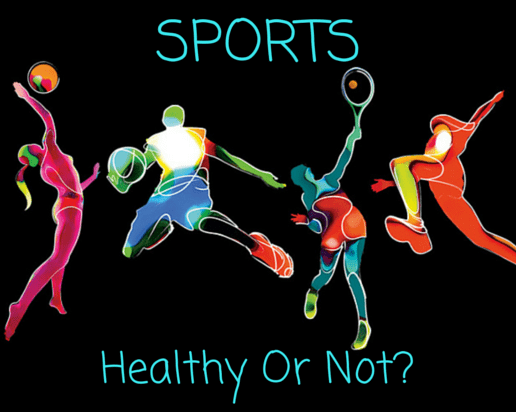
Which sports make you healthier and which are not
Every year, a number of young people all over the world die while participating in a rigorous competitive sport – usually football, soccer, hockey, or basketball. Later, it is discovered that, in most instances, there was a pre-existing condition, such as a heart defect, that had gone undiagnosed. These are the extreme instances of sports catastrophes, due to poor health. But sports participation can also be harmful to completely healthy people as well, because they choose to participate when their bodies are not in good condition to do so.
Health Issues to Consider
Some young people have chronic conditions that, while not necessarily life-threatening, should curtail their participation in certain sports.
-
Asthma and Serious Allergies: Generally, sports that require extended endurance are harmful, such as long-distance running or cycling. Sports that offer rest periods between activity are better – baseball, swimming (not long-distance), wrestling, and even football are fine. For individuals with serious allergies to molds and pollens, however, outdoor sports activities during times of the year when mold and pollen counts are high, can trigger serious reactions and accompanying breathing crises.
-
Diagnosed heart issues: A doctor really must be consulted before anyone with a heart condition participates in a sport. For some conditions, strenuous physical activity may not be a problem; for other conditions, it is. Extreme heat and cold, however, are generally quite harmful for heart conditions, and sports that take place outdoors in these weather conditions should be avoided. Student athletes with heart conditions, for example, should not be exposing themselves to football practices that occur in the heat of the summer in preparation for the fall season.
-
Bone and Joint Issues: Early onset of rheumatoid arthritis in young people, along with many other bone and joint conditions, should preclude participation in any high-impact sports activities, such as running and gymnastics. Instead, low impact sports, such as swimming, should be pursued. And before you engage in sports activities, take a warm bath or shower to loosen those joints.
-
Diabetes: Diabetics should stay aware of the fact that strenuous exercise lowers blood sugar levels in the body, and they will need to take special cautions before participating. The right snacks can prevent a serious reaction and potential collapse.
-
Hemophilia: This blood disorder can make sports participation very dangerous, especially in contact sports such as football, soccer, wrestling, and hockey. Any injury can cause internal bleeding that is extremely dangerous. Sports for hemophiliacs include individual ones – tennis, swimming, golf, and cross country running.
Sports as Health Enhancers
Most sports will enhance health, because there are many side benefits. Athletes who participate on teams with coaches are often provided diets that are healthier, and are given guidelines for rest and exercise that will help prevent injuries. Athletes are also often given off-season fitness programs which they are expected to follow. All of these things improve the general health of any athlete participating in a sport.
Young people involved in individual sports also face an off-season regimen of healthy diet, continual practice and exercise, as required by their coaches. Staying fit year-round can prevent serious injuries during a season. If you are an active participant - remember that you need to make time for resting, while our writers can take care of your assignment.
Coaches push their athletes to their physical limits; and athletes push themselves to their physical limits as well. A part of all athletic training programs needs to be the continual reminders to these young people that if it doesn’t feel right in any way, they should stop. Some injuries are permanent; some injuries can result in serious physical damage or death; and some injuries can eliminate an athlete from further participation in a sport. Any athletic program must insist upon thorough physical examinations of its participants (not just the cursory sports physicals that are given today), strong off-season fitness programs, and a focus on diet and other healthy lifestyle choices.
Benefits of Doing Sports in the Morning
Although working out or doing sports in general boosts overall health, it is proven that doing it in the morning is best.
-
It will put you in a good mood for the rest of the day. Sports or any physical exercise cause our brain to secrete hormones called endorphins that is responsible for making us feel good and happy.
-
There will be fewer distractions in the morning.
-
Your metabolism will improve.
-
You will have more time to do other things.
-
Enhanced alertness and focus when you reach school or work.
If for some reason you cannot do sports or just not an athletic person at all, there are other activities or morning rituals to stay healthy.
-
Walk your dog in the morning. It will be good for the both of you.
-
Walk to work. If you live just a few blocks away from work, might as well squeeze in some exercise.
-
Meditate. This activity is proven to increase focus and creativity as it pacifies the mind and relax the body.
If you think you are too busy to exercise because you have to study, walk to the park and get under the tree. It’s one of the best places to study. As simple as walking for a few minutes already counts as a physical exercise to stay in shape and keep healthy.

